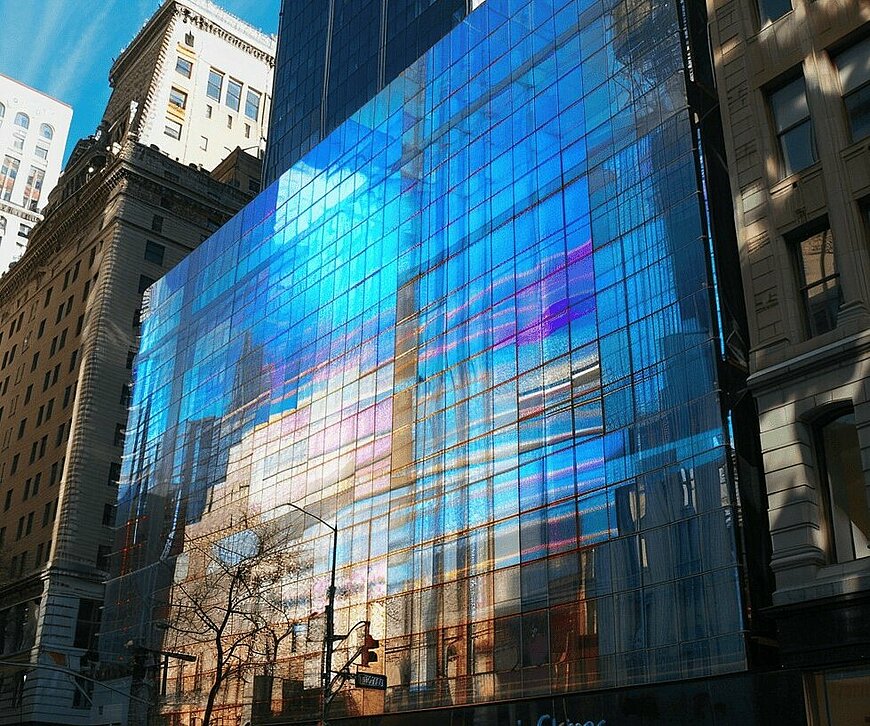Transparent solar panels make solar energy everywhere a reality

A recent scientific breakthrough is paving the way for transparent solar panels, a technology that can potentially bring solar energy everywhere.
A breakthrough in solar technology has been achieved by a team at King Abdullah University of Science and Technology (KAUST). Their research has produced semi-transparent organic photovoltaics with nearly 20% efficiency. This advancement paves the way for integrating solar energy harvesting into everyday surfaces, from windows to greenhouses, without obstructing natural light. The potential applications are vast, potentially transforming every glass pane into a power source. But first, what is this technology, and how does it work?
Why this is important
Glass is everywhere: in buildings, cars, smartphones. What if we could produce the energy to power these devices through glass?
Understanding the technology
Transparent solar panels can generate electricity from windows. Their functioning comes as a counterintuitive idea because, normally, solar cells absorb light and convert electricity. When a surface is transparent, sunlight passes through the medium without being harnessed. Transparent solar panels selectively absorb a specific part of the solar spectrum.
In other words, they allow visible light to pass through while converting non-visible light into electricity. In the case of the materials used at KAUST, known as non-fullerene acceptors, are adept at generating charges when exposed to sunlight, which is then harnessed as electrical power. These photovoltaics are unique because they don’t just offer a sustainable energy solution; they do so without compromising the aesthetics of buildings or the comfort of those inside when applied in buildings.
From labs to skyscrapers
The journey of transparent solar panels from research labs to urban landscapes began with a big leap at Michigan State University in 2014. Researchers there created the first fully transparent solar concentrator, essentially turning any glass surface into a photovoltaic cell. Since then, the technology has evolved rapidly, with companies like Ubiquitous Energy and Physee leading the charge in bringing this technology to market.
Today, these transparent panels can be customized to fit various applications. From the vast windows of skyscrapers to the compact screens of smartphones, the panels are versatile in both size and shape. The technology captures invisible UV and infrared light through organic salts, leaving visible light unchanged. This allows for various uses, effectively transforming any sunlit surface into an energy source.
Industry pioneers are pushing the envelope further. Ubiquitous Energy is developing ClearView Power technology, which integrates transparent solar panels into architectural glass. Their aim is to enable net-zero energy buildings, where the structure itself can produce as much energy as it consumes.
Smart windows: a glimpse into the future
Alongside energy production, the integration of smart technologies into glass is another area of rapid innovation. Companies like eLstar Dynamics have developed smart glass that can switch from opaque to transparent in seconds. This not only allows for control over light and heat entering a building but also has implications for privacy and design.
The technology uses a system of layers with nanosized particles in between, which can be controlled to adjust the amount of light passing through. Such advancements demonstrate the dual purpose of glass in future buildings: as a medium for both energy generation and smart environmental control.
Challenges and prospects
While the benefits of transparent solar panels are clear, challenges remain. The more transparent the panel, the less light it captures for electricity production. This trade-off means that while these panels are less obtrusive, they’re also less efficient than their opaque counterparts. Additionally, cost is a major barrier to widespread adoption. Current production expenses for transparent photovoltaics are high, making them less profitable than traditional solar panels.
However, as research continues and production processes improve, there is hope that costs will decrease. Spain, for instance, with its sunny climate, has seen a significant increase in solar energy production, demonstrating both the feasibility and appeal of renewable energy sources. Transparent solar panels, with their inherent versatility, could become an integral part of that mix.
The dawn of an energy revolution
As society advances towards a greener future, the role of transparent solar panels cannot be understated. Their ability to integrate seamlessly into everyday structures could usher in an era of ubiquitous solar energy. Imagine living in a world where your office windows, your car’s sunroof, or even the screen of your mobile phone could contribute to the power grid. This is the promise of transparent solar technology—a world where clean energy is literally at our fingertips, and every pane of glass is a potential source of power.
With each scientific breakthrough and successful implementation, we edge closer to a sustainable future. As research teams around the globe continue to improve the efficiency and affordability of these panels, we may soon see the day when transparent solar technology is as common as glass itself. It’s a vision of the future that’s bright, clear, and powered by the sun.
